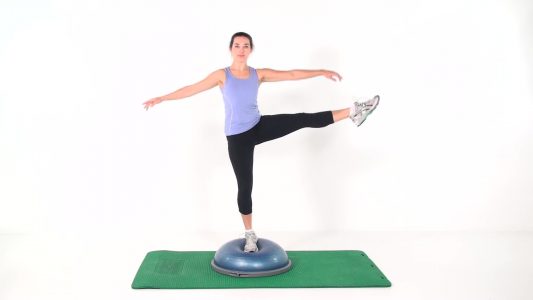What is Circuit Training?
Of course most trainers know what circuit training is. But just as a refresher, lets summarize it. Circuit training is a dynamic and efficient workout style that personal trainers can use to challenge their clients. This method incorporates a series of exercises targeting different muscle groups, with minimal rest between movements. However, circuit training not only builds strength but also improves cardiovascular health and flexibility, making it a well-rounded approach for full-body fitness. In this blog, we’ll dive into the benefits of circuit training and provide practical tips for trainers on how to implement it effectively.
Full Body Circuit Training Maximizes Time Efficiency
One of the main benefits of circuit training is its time efficiency. By moving quickly from one exercise to the next, clients can complete a full-body workout in a shorter amount of time compared to traditional weightlifting or cardio sessions. For personal trainers, this is an effective way to provide clients with a high-quality workout without spending hours in the gym.
For example, a 30-minute full-body circuit could include:
- Squats for lower body strength
- Push-ups for upper body and chest
- Burpees to raise the heart rate and improve endurance
- Plank holds for core stability
With short rest periods between exercises, the heart rate stays elevated, combining strength training and cardio into one efficient workout. Clients will appreciate being able to see progress without spending excessive amounts of time in the gym.
Circuit Training is Versatile for All Fitness Levels
One of the reasons why circuit training is so popular among trainers is its versatility. Whether your clients are beginners or seasoned athletes, you can easily adapt the workout by adjusting the exercises, weight, or intensity.
For beginners, circuits might focus more on bodyweight exercises like lunges, squats, and planks, while more advanced clients can add weights, resistance bands, or plyometrics. As trainers, it’s important to customize each circuit to fit the client’s fitness level and goals, ensuring a safe yet challenging workout.
Additionally, by incorporating a variety of exercises, you can also target different muscle groups, keeping the workout engaging and preventing muscle imbalances.

Total PT Fitness Online - Create Workouts, Make More Money
Sample Circuit Training Programs
Example Circuit for Beginners:
- Bodyweight squats (12 reps)
- Push-ups (8-10 reps)
- Step-ups (10 reps per leg)
- Russian twists (12 reps per side)
- Rest for 30 seconds, repeat for 3 rounds
Example Circuit for Advanced Clients:
- Dumbbell thrusters (15 reps)
- Box jumps (10 reps)
- Deadlifts (12 reps)
- Kettlebell swings (20 reps)
- Mountain climbers (30 seconds)
- Rest for 30-45 seconds, repeat for 5 rounds
Full Body Circuits Enhance Cardiovascular Endurance
A key benefit of full-body circuit training is the improvement of cardiovascular endurance. Unlike traditional strength training, which often involves longer rest periods between sets, circuit training keeps the heart rate elevated throughout the session. This combination of strength and cardio means that clients are not only building muscle but also improving their cardiovascular health.
For trainers, this offers the opportunity to create workouts that serve multiple purposes. Furthermore, not only are clients gaining strength, but they’re also boosting their endurance, leading to better overall fitness. Including exercises like jumping jacks, burpees, or high knees into a full-body circuit can elevate heart rate, helping to burn calories and increase stamina.

Circuit Training in the Gym Promotes Muscle Balance
Full-body circuit workouts ensure that multiple muscle groups are targeted in a balanced way. By rotating through different exercises, clients can avoid overtraining certain areas and neglecting others. As a personal trainer, it’s important to structure circuits that address both major and minor muscle groups to create a balanced physique.
A common problem for clients is the overemphasis on certain areas, like the upper body, while neglecting others, such as the lower body or core. Therefore, full-body circuit training ensures equal focus on all major areas, helping to build overall strength and reduce the risk of injury.
Sample Circuit to Promote Muscle Balance:
- Deadlifts for posterior chain
- Chest presses for upper body strength
- Leg presses for lower body
- Bicycle crunches for core
- Overhead press for shoulders
- Rest for 30-60 seconds, repeat for 4 rounds
This type of circuit includes exercises that hit every major muscle group, ensuring a balanced and effective workout.
Circuit Training Builds Mental Toughness
Another often overlooked benefit of full-body circuit training is the mental toughness it builds in clients. The fast-paced nature of circuits can be challenging, requiring focus and determination to push through the workout. For example, as trainers, you can use circuit training as an opportunity to coach clients on mental resilience, encouraging them to push their limits while maintaining proper form and focus.
Incorporating a mix of exercises that challenge both strength and endurance can help clients develop not only physically but also mentally. Over time, they’ll see improvements in their performance, which can boost their confidence and motivation.
How Total PT Fitness Can Help You Develop Circuit Programs
Total PT Fitness software is an excellent tool for personal trainers looking to create and manage circuit training programs. This platform allows trainers to design customized circuits by selecting exercises from its vast database, ensuring workouts are tailored to each client’s fitness level and goals. The software streamlines program creation by offering templates and tracking client progress. Likewise, its interface helps trainers save time while organizing and planning sessions, allowing them to focus more on coaching and less on administrative tasks. With Total PT Fitness, trainers can ensure that their circuit training programs are efficient, varied, and engaging for clients.
Why Circuit Workouts Should Be Part of Your Training Program
Incorporating circuit workouts into your clients’ routines is a great way to offer a comprehensive, time-efficient, and versatile workout. In conclusion, circuit training not only helps clients build strength and improve endurance but also promotes muscle balance and mental toughness. As a personal trainer, you can customize these workouts to fit the specific needs of your clients, ensuring they stay engaged and motivated.
For more information on how to incorporate full-body circuit training into your clients’ routines, check out this guide on effective circuit training for all fitness levels and this breakdown of workout programming.
You may also be interested in:
Ready to see how easy it is to train more clients, make more money and make your job easier?
Total PT Fitness software elevate your brand and can transform your personal training business. Sign up for your very own free 2 week trial. No obligation, no credit card required.
Professional Software for Personal Trainers and Wellness Professionals
Video exercise, fitness testing, nutrition counseling and phone app for clients

